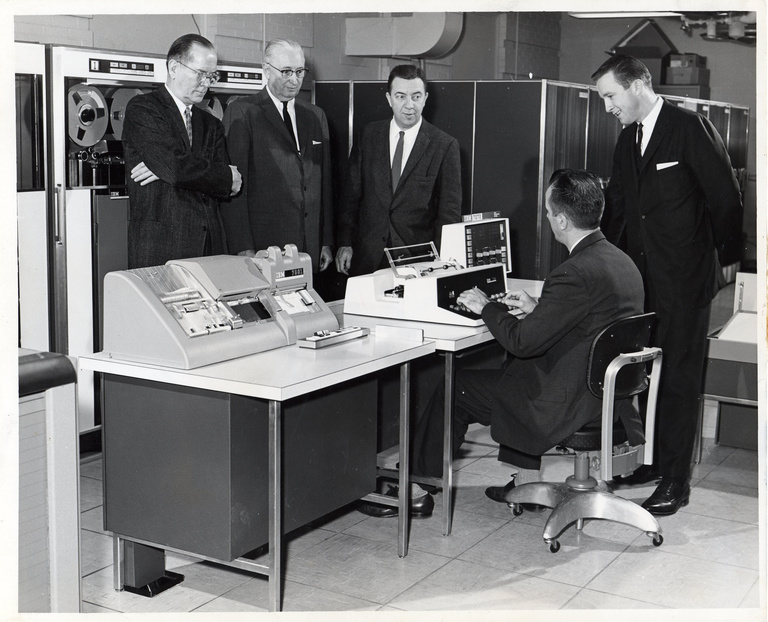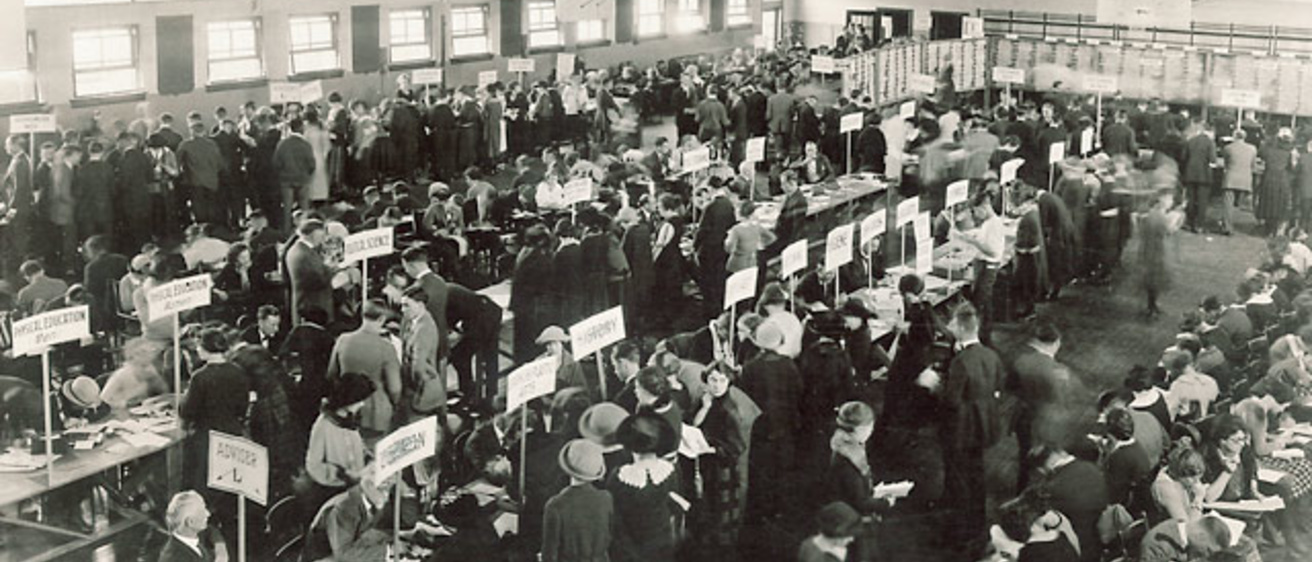(Editor’s note: The Old Gold series provides a look at University of Iowa history and tradition through materials housed in University Archives, Department of Special Collections.)
Old Gold, 50-something and a college student during the 1970s, remembers lots of good times from that decade. Standing in long lines to register for the next semester’s courses, however, is not one of them.
Back in the day, before there was a Web, Old Gold and thousands of his classmates stood or waited in line for hours at the start of each semester—in the Field House if you went to UI—waiting to sign up for classes that could make or break a planned 16-credit schedule. The exercise was a kind of dreaded ritual, a rite of passage that nonetheless brought a sense of accomplishment upon graduation. Stripes well-earned, you might say.
No, Old Gold won’t embellish the story with blizzards or wading uphill both ways. He doesn’t have to.

To be sure, computers were in wide use on campus by 1975, but their activity was limited primarily to research, administrative, and business-related functions, mostly invisible to students and the general public. The university’s first computing center, consisting of an IBM 650 mainframe, was installed 55 years ago this fall in the basement of East Hall (now Seashore). Think of it as a condo timeshare—its use was divided between two cutting-edge Iowa initiatives at the time: high-speed scoring of standardized tests, directed by Professor E.F. Lindquist of the College of Education, and data analysis for NASA from the newly launched Explorer satellite, coordinated by Professor James Van Allen of the Department of Physics.
Less than three years later, in 1961, the IBM 650 was replaced by two more powerful, yet smaller in size, computers. And the drive—so to speak—toward ever faster, higher capacity, and more compact computers was on.
Still, the march toward newer, better, faster proceeded largely unnoticed to most of us for about 20 years. That is, until 1978, when university officials announced a breakthrough: beginning that November, students registering for spring 1979 would do so in a computerized registration center located in the Geology Auditorium, behind Calvin Hall. Under the new process, each student would spend an average five to 10 minutes to complete registration, after meeting with their advisors. No more herding through the Field House from table to table, obtaining individual department permission to enroll in each requested course. Concert tickets? Well, that’s another story.
“I think [automated course registration] will be a big help to our students and it will offer them many benefits through the improvement of the advisory system,” said Philip Hubbard, UI vice president for student services, in a Daily Iowan article from July 7, 1978.
In truth, the long lines did not disappear overnight. Indeed, they persisted into the 1990s, when ISIS was introduced. The improvements came only gradually, but they did arrive one step in line at a time. This first generation of computerized registration is, of course, a far and creaky cry from today's ISIS online system. But for those who experienced the joys and pitfalls of, um, analog registration, it represented a few modest steps forward. Even without a blizzard, uphill, both ways.
Additional material:
Read a Daily Iowan article from March 16, 1961, about the new computer installation in East (now Seashore) Hall. The linked image is from the Daily Iowan Collection (RG 02.11), University Archives, Department of Special Collections, University of Iowa Libraries.
Read a Daily Iowan article from July 7, 1978, about the introduction of computerized course registration. The linked image is from the Daily Iowan Collection (RG 02.11), University Archives, Department of Special Collections, University of Iowa Libraries.
